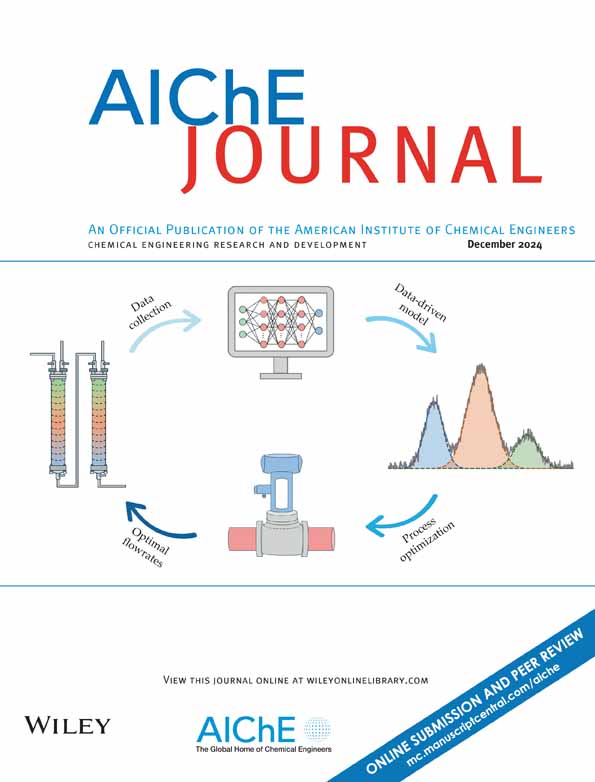基于银基竞争配位络合的高效烯烃分离的功能化溶剂
IF 3.5
3区 工程技术
Q2 ENGINEERING, CHEMICAL
引用次数: 0
摘要
液态α -烯烃是重要的基础化工原料,溶剂萃取是分离α -烯烃的有效方法之一。本文选用银+作为配位金属,选择与银+有弱相互作用的阴离子作为配位金属。基于羰基氧与- NH2的相互作用,丙酰胺被选为有机配体。因此,提出了一种具有竞争配位机制的[agntf2:2丙酰胺]深度共晶溶剂,用于烯烃的高效分离。对于1己烯/己烷,选择性达215.24,单段萃取烯烃去除率达90.55%。利用ESI‐MS和XAFS,结合实验和计算,揭示了C2‐Ag‐O2的竞争配位机制和配位结构。该溶剂可以有效地从模拟油中分离烯烃,也可以有效地提取和分离不饱和烃,如芳烃/烷烃。本文章由计算机程序翻译,如有差异,请以英文原文为准。
Functionalized solvents for efficient olefin separation based on Ag‐based competitive coordination complexation
Liquid α ‐olefins are important basic chemical raw materials, and the solvent extraction is one of the effective methods for their separation. In this paper, Ag+ is used as the coordinating metal, and , which has a weak interaction with it, is selected as the anion. Based on the interaction between the carbonyl oxygen and −NH2 , propionamide is selected as the organic ligand. Thus, a deep eutectic solvent of [AgNTf2 :2propionamide], with a competitive coordination mechanism for the efficient separation of olefins, was proposed. For the 1‐hexene/hexane, the selectivity is up to 215.24, and the olefin removal rate of single‐stage extraction is up to 90.55%. Using ESI‐MS and XAFS, combined with experimental and calculations, the mechanism of competitive coordination and the coordination structure of C2 ‐Ag‐O2 were revealed. This solvent can be used to effectively separate olefins from simulated oil, as well as effectively extract and separate unsaturated hydrocarbons such as aromatics/alkanes.
求助全文
通过发布文献求助,成功后即可免费获取论文全文。
去求助
来源期刊

AIChE Journal
工程技术-工程:化工
CiteScore
7.10
自引率
10.80%
发文量
411
审稿时长
3.6 months
期刊介绍:
The AIChE Journal is the premier research monthly in chemical engineering and related fields. This peer-reviewed and broad-based journal reports on the most important and latest technological advances in core areas of chemical engineering as well as in other relevant engineering disciplines. To keep abreast with the progressive outlook of the profession, the Journal has been expanding the scope of its editorial contents to include such fast developing areas as biotechnology, electrochemical engineering, and environmental engineering.
The AIChE Journal is indeed the global communications vehicle for the world-renowned researchers to exchange top-notch research findings with one another. Subscribing to the AIChE Journal is like having immediate access to nine topical journals in the field.
Articles are categorized according to the following topical areas:
Biomolecular Engineering, Bioengineering, Biochemicals, Biofuels, and Food
Inorganic Materials: Synthesis and Processing
Particle Technology and Fluidization
Process Systems Engineering
Reaction Engineering, Kinetics and Catalysis
Separations: Materials, Devices and Processes
Soft Materials: Synthesis, Processing and Products
Thermodynamics and Molecular-Scale Phenomena
Transport Phenomena and Fluid Mechanics.
 求助内容:
求助内容: 应助结果提醒方式:
应助结果提醒方式:


